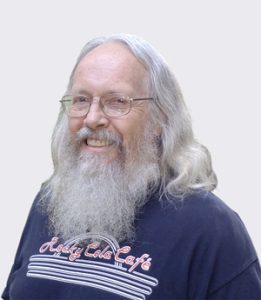Montrose Search and Rescue – Whittier Narrows Earthquake Buries Construction Worker
It was a clear morning just after 7:30 on Oct. 2, 1987. In the mountains above Altadena, a construction crew was digging a deep shaft, three feet wide and 37 feet deep, which was to be filled with concrete to create a footing for one of the massive power line towers that would transmit electricity from the Gould Substation in La Cañada over to the San Gabriel Valley. At the bottom of the three-foot-wide shaft, worker Anthony Bernal had just finished jackhammering and was loading a bucket with debris to be hauled up. High above him another worker dangled in the shaft from a rope.
At 7:52 a.m., eight miles beneath the city of Rosemead, a previously unknown fault broke, creating an earthquake that sent out shock waves that registered 5.9 on the Richter scale. At the construction site on the mountainside, the workers said it felt like a bomb went off. Inside the shaft the worker suspended by the rope scrambled back up to the shaft’s opening, chased by thick clouds of dust.

president of the Historical Society
of the Crescenta Valley and loves local history. Reach him at
lawlerdad@yahoo.com.
Anthony Bernal at the bottom of the shaft was not so lucky. Dirt and rocks from the sides of the shaft rained down on him. In the chaos of the dust and falling rocks he tried to climb on top of his jackhammer in a desperate attempt to keep his head above the rising debris level, but to no avail. He was quickly buried. He didn’t stand a chance.
At the top of the shaft, as the dust settled, the other workers quickly rallied to try to save the trapped man. With incredible bravery, a man was lowered into the shaft. Thinking fast, the worker drove a pipe down through the dirt covering Anthony in the vain hope that it would give him some air. Then he began the slow process of digging. There was only room for one man at a time down in the shaft. It took three minutes just to fill one bucket and raise it to the surface, but they kept frantically digging and filling the bucket. After an hour they slowed, knowing Anthony was dead, but they kept on working with quiet resignation.
The construction crews called authorities and the elite underground rescue unit of the Montrose Search and Rescue team was called out.
By the time the MSAR team arrived, much had been accomplished by the hard-working crew to retrieve the body of Anthony Bernal. They had “sleeved’ the shaft with a corrugated pipe, reducing the risk of debris coming down on rescuers as the aftershocks continued to roll through. Through desperate digging the crew had reached Bernal’s head and they could tell he was dead.
The MSAR team usually performs rescues with the hope for a successful outcome, but the team knew going into this that the victim was already dead. They also knew an aftershock could collapse the shaft at any time. The three-man underground rescue team prepped their gear and one of them, John Camphouse, put on a full-body harness, hooked up to the construction crew’s power winch and descended into the dark shaft. Camphouse remembered that he was “very nervous, to say the least, but we had a task to accomplish. I was quite focused on the task at hand.”
Using a shovel and small hand tools, it took several hours to free the trapped body. At 3 p.m., Bernal’s body was finally lifted to the surface. It was a very sad and sobering operation for a usually optimistic MSAR team.
Underground rescue team member John Lapham relates: “What I remember the most was ‘seeing’ the aftershocks coming. It was a clear day and we were about 1,500 to 2,000 feet above the city. We had at least a 25-mile view for 180 degrees of the city. In the distance we could see a ‘curtain’ of dust moving rapidly toward us. That was the dust created from an aftershock wave. When it hit us that became very clear. That operation was a good example of how insignificant humans, and what we create, are in comparison to nature.”
